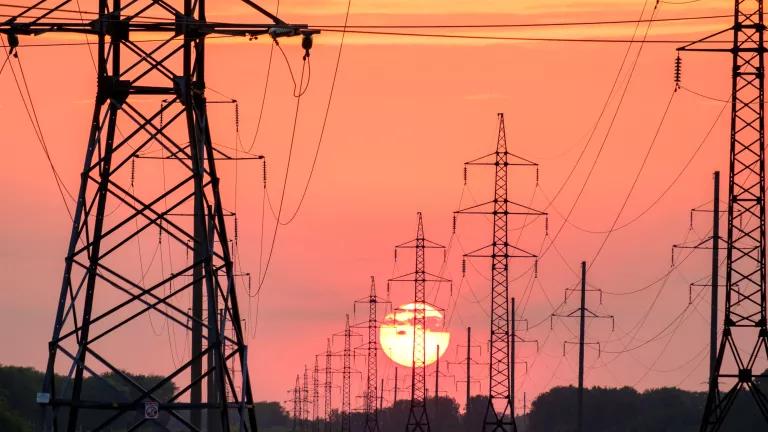California’s largest utilities administered energy efficiency programs over the past two years that save customers more than $1.5 billion in the form of lower utility bills, avoid the need for two giant power plants, and remove over two million tons of carbon pollution, equal to taking more than a half-million vehicles off the road.
These 2010-2012 energy-saving programs—ranging from appliance upgrades and home weatherization to industrial process improvements—have been wildly successful, saving consumers money, helping California meet its energy needs, and continuing on the state’s path to a cleaner energy economy.
And yet, the California Public Utilities Commission is waffling on its commitment to make energy efficiency the utilities’ top priority resource, since it still hasn’t provided utilities with an earnings opportunity for supporting such effective programs, even though it said it would.
Now is not the time to undermine support for the energy efficiency business model of utilities, as the Commission just approved a significant suite of programs for the next two years that are anticipated to produce another $1 billion in net benefits while substantially reducing greenhouse gas emissions, as my colleague Lara Ettenson describes here.
Wavering on its promise to allow earnings for these programs is wrong, shortsighted and could lead to long-term repercussions that jeopardize Californians’ significant energy savings. We don’t want to shave off millions of dollars now, only to cost us billions of dollars later.
Make Efficiency the Top Priority
The Commission, which regulates the state’s major electric and natural gas utilities, allows earnings if they invest in dirtier and costlier competitors to energy efficiency, like fossil-fueled power plants. Several years ago, the Commission said it would put efficiency on a level playing field by providing an earnings opportunity for it as well—which is the right move.
Operating under that premise, the utilities saved 5,700 GWh over just the last two years (equivalent to the amount of electricity used annually by all the homes in Alameda and Contra Costa counties). Because these energy savings cost less than providing energy, customers are saving over $1.5 billion on their utility bills and preventing carbon pollution.
And even though these programs exceeded the Commission’s requirements, it is still vacillating on whether to provide any earnings opportunity at all.
CPUC Delay Threatens to Undermine Its Efficiency Commitment
As my colleague Devra Wang blogged, the Commission must provide an appropriately sized earnings opportunity when utilities help customers save energy if it’s ever going to truly be California’s top-priority resource.
Otherwise, the Commission’s policy directive of “invest first in energy efficiency” will be contradicted by its financial incentives of “we’ll pay you more for supply-side resources.” What we need now is strong and steady leadership to reaffirm that efficiency remains the No. 1 resource, and a clear signal that utilities should continue to build a business around it.
Californians already know efficiency is a great deal because it lowers utility bills for all customers (commercial, residential, agricultural, and industrial). It also creates jobs in the efficiency industry and beyond when people spend their utility bill savings on goods and services in the local economy. In addition, it supports California’s AB 32 climate law, which will cap greenhouse gas emissions at 1990 levels by 2020 by using clean energy resources like efficiency, as well as solar and wind energy.
We need our utilities to continue supporting efficiency—but the Commission needs to set financial policies that support the utilities in running energy-saving programs.
Opponents’ Rationale to Eliminate Earnings Is Shortsighted
Opponents contend that because efficiency earnings were supposed to encourage utilities to achieve energy savings, and the 2010-2012 period over which the incentive was supposed to spur good performance has nearly ended, the Commission doesn’t need to keep its word—it already got what it wanted in energy savings.
That’s like telling your child you’ll give her an allowance if she does a good job cleaning her room but saying afterward that you’re not going to pay because you already motivated the desired results and you still haven’t figured out exactly what “a good job” means.
Eliminating earnings for the efficiency programs might “save” millions in the short-term, but it would cost billions over the long haul by undermining the Commission’s credibility and the utilities’ commitment to aggressively pursue cost-saving efficiency programs.
Over the coming months, the Commission will decide whether to uphold its promise but the decision ought to be crystal clear: It should provide earnings commensurate with the utilities’ success and reaffirm its commitment to energy efficiency as a priority resource.
That will be an even better deal for California.



